Alexandria: The Most Civilised City in Egypt
“I don’t think we should move on tomorrow,” Z says. “Let’s stay in Alex a bit longer.”
“Why?” I say. “What’s there to do here?”
My expectations of “things to do”, like those of many visitors to Egypt, are by now rather high.
I’ve been getting quite sniffy around anything less than 3000 years old and not world famous, and even, for that matter, some of that…
“Well,” he says. “You can just walk around, and look at stuff, and no one bothers you. And there’s the library…”
There is, in fact, rather more to Alexandria, Egypt’s second city, than the library. Though that is absolutely stunning.
Or even the corniche, the longest seaside promenade in the Mediterranean, which winds along the coast for 22 spectacular miles, and the cool sea air which hits me in the face when I open the doors on our balcony each morning onto blue Mediterranean, palm-shaded square, and curving natural harbour.
But what’s really grabbing us is how, well, zen Alexandria is.
From the crumbling colonial buildings in the centre to its green city gardens, its trundling trams and narrow streets with fluttering laundry, its authentic local markets, phenomenal fresh seafood and lively-for-Egypt student bar scene, it feels a remarkably liveable city.
More like a university city, in many ways, than like Egypt’s largest port, though there is industrial stuff aplenty on the fringes.
Now, Alexandria is certainly short on truly ancient ruins, which is one reason it doesn’t make many foreigners’ itineraries for Egypt (although an Egyptian blogger friend tells me it’s the number one domestic tourist destination come summer).
The city was founded by Alexander the Great on the site of a tiny Egyptian settlement, and has been destroyed on various occasions since then.
But…
It has catacombs! Lots of catacombs!
One set run under the ruins of the Temple of Serapis and most likely housed the mummified remains of sacred bulls. Turning into a secret underground chamber to find a replica sculpture of the sacred bull was a proper Tomb Raider moment…
The second are, well, just bizarro: a truly peculiar fusion of Roman, Egyptian and Greek religious practices and artistic styles.
Descending via a spiral staircase around the well through which the bodies were lowered is eerie. But not as eerie as the subterranean, rock-hewn dining hall where the families of the dead would meet, dine and offer sacrifices in honour of their relatives, whose bodies lay barely a few feet away, or the carved Roman-style tomb and sarcophaguses complete with Ancient Egyptian gods dressed as Roman legionaries.
Wandering the winding tunnels lined with stone lockers where the coffins were placed was…
… Well, all of a sudden, rather creepy…
We fled, both of us, back to the spiral stairs and daylight as if pursued by hell hounds…
As medieval fortresses go, you don’t get much more photogenic than Qaitbey citadel, the Mameluk fort built on (and from) the old lighthouse of Alexandria, one of the original wonders of the world.
The stroll along the seafront from the centre, past beaches full of shouting, splashing children, ice cream stands and courting couples sitting pensively on the seawall, is equally lovely.
Like the Citadel in Cairo, Qaitbey is particularly fun on a Friday, when stalls sell glittery shells and gewgaws to Egyptian visitors, brightly coloured parasols shade the cafe tables, and the world goes by very happily, much of it on bizarre pedal-powered four-wheelers.
Add in some friendly kittens, a lot of friendly Egyptians, restored details including lavatories, cannons, wells and reservoirs and a mosque with a beautifully tiled floor, and it’s an excellent place to spend an afternoon.
Now, Egyptian food is, I think, seriously under-rated: it’s not all grills, dips and salads, by any means (the country is in the running for the best meat pies on the planet).
But Alexandria offers fantastic fresh seafood, cool local restaurants and decent international cuisine.
At a place called Fish Market, with views over the harbour, we ate clams that were alive and squirting water five minutes before they arrived at our table, doused in garlic and parsley butter.
In a little cafe near the library we chowed on the East Mediterranean staple, kofta, with views over a tiny rocky beach; and at a hotel on the square we sat on a rooftop overlooking the harbour lights and ate perfectly decent Western-Chinese food.
Alexandria’s huge Greek community have left their mark, too, not only in the shape of Greek clubs and Greek restaurants but some lively after-hours bars.
Alexandria was always famous for its library, the greatest centre of learning in the whole ancient world until it burnt down so completely that its precise location is still a matter for debate.
The new library of Alexandria, an icon of modern architecture, aims to replace this.
Now, for an icon building, it’s oddly placed. On a promontory, it could stand as Alexandria’s Sydney Opera House. As it is, it doesn’t entirely whelm until you get up close.
Inside, there are art galleries, vast reading rooms illuminated by natural light that filters through the sculpted roof, a planetarium “orbiting” the main building, a science museum, a museum of antiquities and a collection of printing presses.
An ambitious online collection includes digitised copies of Napoleon’s savants’ first reports and drawings from Ancient Egypt, as well as a vast mass of Arabic ex-copyright literature, a rival to Project Gutenberg.
It’s rather splendid. As, for that matter, is the Museum of Alexandria, complete with underwater exhibits framed by montages of the divers discovering them. (It’s still possible to dive this site, as well.)
I’ve written before about the joy of mooching, an activity which the pace of life and tourist hassles in many Egyptian cities makes extremely difficult.
Alexandria is, in fact, an excellent place to mooch, whether your interests run to markets, to literary history (Lawrence Durrell and Cavafy are two of the city’s most famous residents), to culture, or just, well, wandering.
It’s just so easy…
Public transport is simple: flag and jump a microbus on the Corniche, hand over an Egyptian pound, request your next stop and bumble along in rubbish Arabic with the ladies on the backseat. (I must confess, I haven’t got to grips with the trams, but those, too, seem doable.)
A wander along the corniche, an activity which in most Egyptian cities is a recipe for raised blood pressure, resulted in only a couple of offers of horses and carts or ice creams, none of them persistent. When we’ve wanted a taxi, I’ve had to flag one. Which is GREAT.
Further, in four whole days of Alexandria, I’ve only been sexually harassed twice, which is, by Egyptian standards, a rest-cure on a level not seen since Dahab.
I have been charged local price for basic items on several occasions and only overcharged badly enough to retrospectively haggle once, and not one person has tried to scam me.
There are lovely kittens, too.
I’ve felt safe enough in Alexandria to allow Z free rein to wander off and meet me somewhere else.
And, best of all, we’ve met a lot of normal, nice Egyptians — families with kids, holidaymakers from out of town, students.
In fact, were I starting our time in Egypt all over again, I’d begin with a week at one of Alexandria’s many language schools, getting a handle on the basics of Arabic’s fiendish grammar and a sense of the rhythm of normal urban life.
Because in this bustling, multicultural Mediterranean city you get a real sense of how Egypt could be, used to be and here, at least, still is.

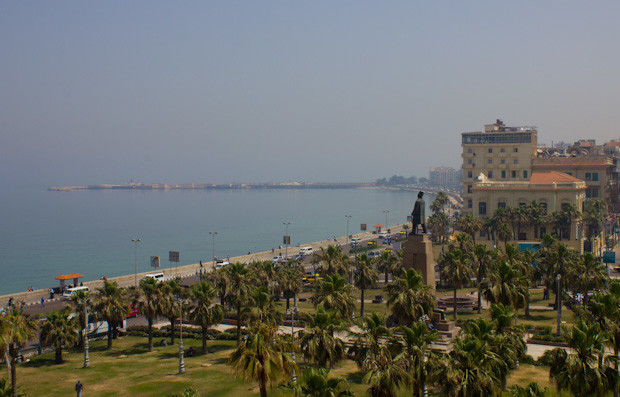
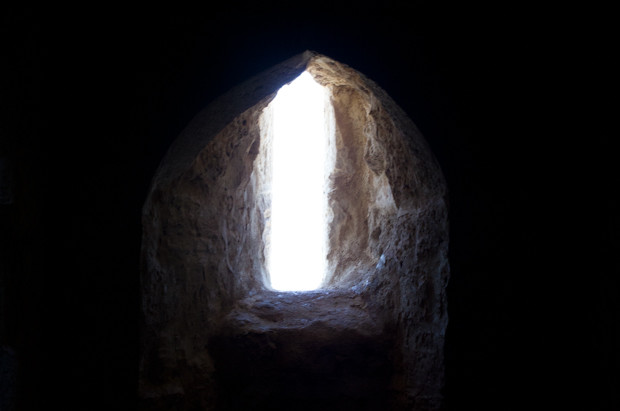
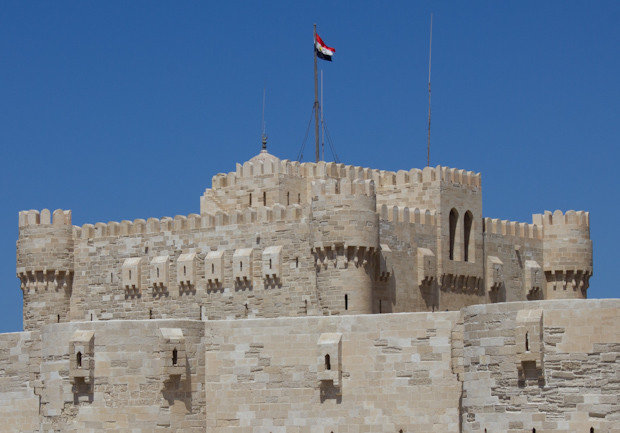
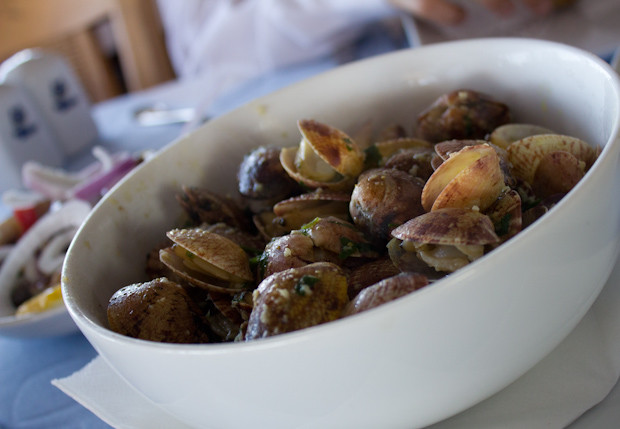
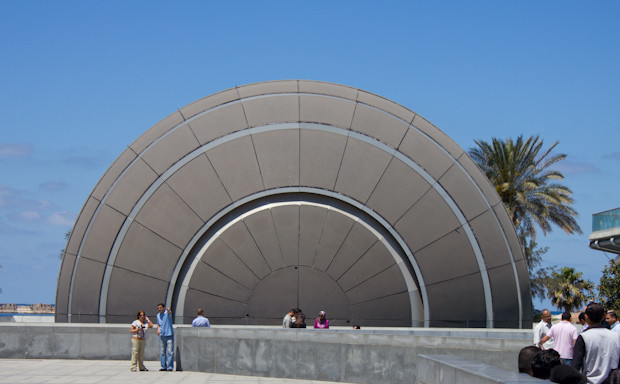
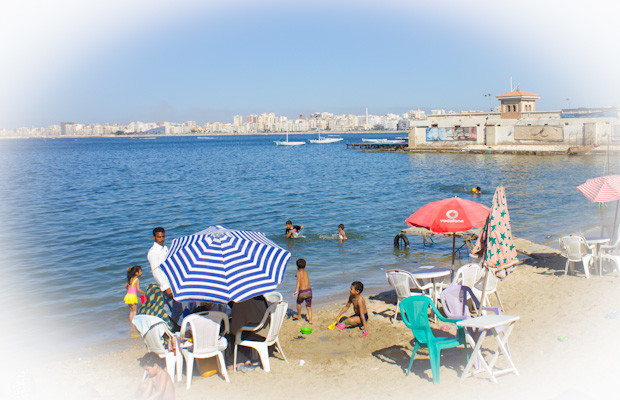
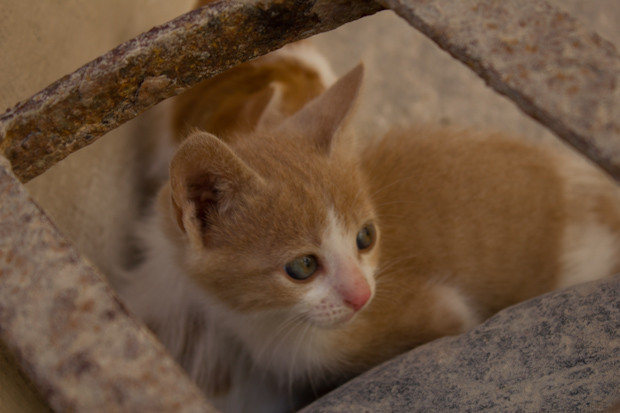
oh! i’d LOVE to go. it sounds perfect for our family.
I think you would LOVE. Apparently, the beaches can get very busy in summer, but there are some nice seaside places out of town, near Aboukir — also with amazing fresh seafood…
I LOVED the picture of the new library. I was always wondering. When I traveled to Alexandria, I could only pretend the library was nearby. Is it open to the public or do you have to have some kind of pass to check out the stacks?
The picture is actually of the planetarium that orbits the new library: I couldn’t get a decent shot of the whole library because its positioning is so odd.
You can wander through the reading stacks at ease if you’re over 14 (under-14s need to go on a free guided tour. As to using it, you’d need to become a member, which seems fairly straightforward: http://www.bibalex.org/Libraries/Presentation/Static/15640.aspx
To get a good view of the whole library you need to be on the other side of the road, and wait long enough until no cars or a few cars are blocking your view 😉
Yeah, that’s me! Constitutionally impatient, and also with Z in tow… I just wish it stood on a promontory or island like Sydney Opera House, y’know?
On another note, I’m really glad you loved Alex that much. This post specifically has made me proud 😀
And if you’re still wondering about where the Tram goes, it simply runs – almost – parallel to the Corniche (Sea road), there are two lines that have the same start and ending point, they seperate only twice during their journey for a couple of stops and then re-unite again…It’s really easy but really really slow (and very crowded during rush hours…it is only 0.25 – 0.5 EGP for a ticket, depending on the time of the day)